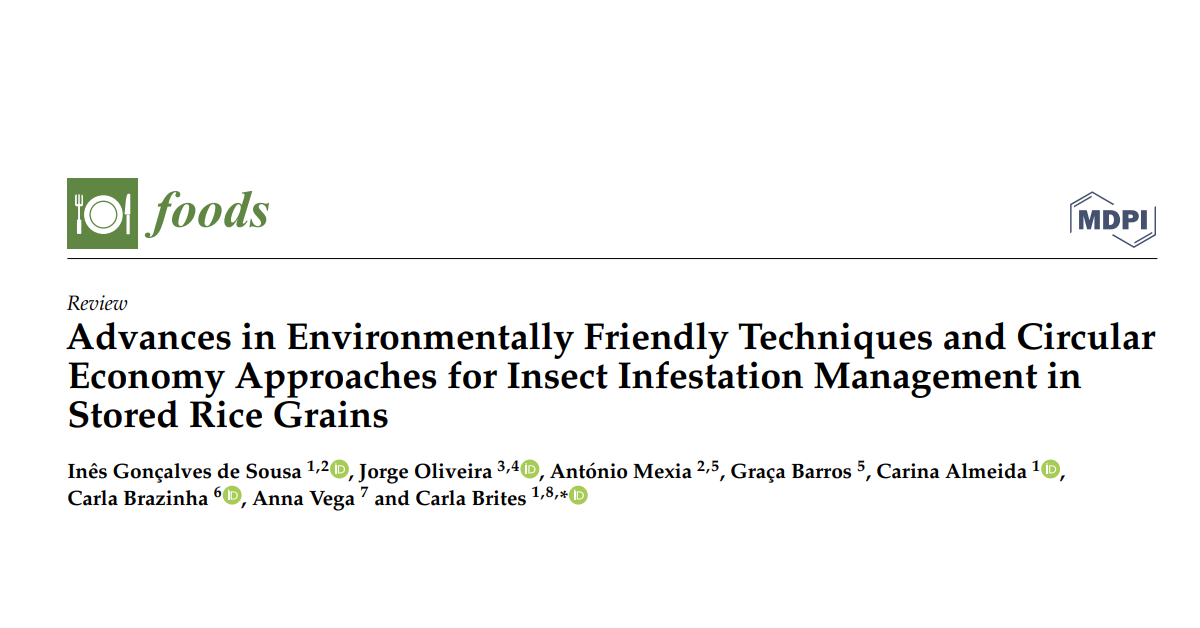Rice (Oryza sativa L.) is a staple food for about half of the world’s population. Therefore, it is important to search for solutions that minimise losses and production costs for producers and ensure food quality and safety for consumers. Improved methods for the detection and monitoring of hidden infestations are useful for adopting infestation control measures. Chemical methods are used to prevent rice losses due to infestations; changing this situation, however, is of the utmost importance, as it harms the environment and human health. The management of infestation by controlled storage conditions, namely temperature and atmosphere composition and the use of current fossil-based packaging with modified atmospheres, is well recognised. The use of environmentally friendly solutions is promising, but it is necessary to perform a life-cycle assessment and cost analysis to evaluate their effectiveness. According to the principles of circular economy, the integration of the best-selected treatments/solutions for insect management, along with the use of biopackaging from rice by-products are recommended. This review describes the methods of detection and control of infestation as well as several promising alternatives to chemical treatments; however, more research is needed in order to obtain effective technological solutions that can be applied at an industrial scale.
Inês Gonçalves de Sousa (INIAV), Jorge Oliveira, António Mexia, Graça Barros, Carina Almeida (INIAV), Carla Brazinha, Anna Vegaand Carla Brites (INIAV)























































Discussão sobre este post